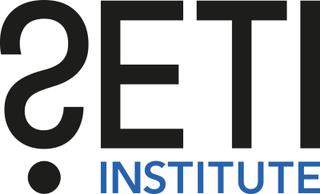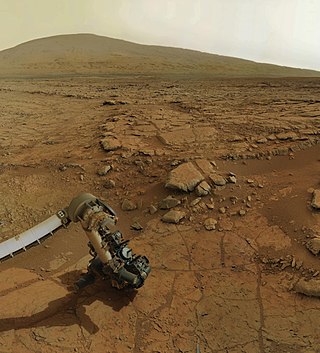Stuart Kingsley (born May 15, 1948, in Stoke Newington, London, England) is considered a pioneer in the Optical Search For Extraterrestrial Intelligence, also known as Optical SETI (OSETI).
While traditional SETI efforts survey the sky in hopes of finding radio transmissions from a nearby civilization, the optical approach to SETI seeks to detect pulsed and continuous wave laser beacons signals in the visible and infrared spectrums. In other words, instead of "listening" for extraterrestrial intelligence, Optical SETI "looks" for it.
Kingsley received a B.Sc. Honors and Ph.D. in electronic and electrical engineering from The City University (London, England), and University College London, England in 1972 and 1984, respectively. He moved to the United States in 1981 and went to work for Battelle Columbus Division as a principal research scientist, becoming a senior research scientist in 1985. He left Battelle in 1987 and established his own photonics consultancy business, Fiberdyne Optoelectronics.
Kingsley is the Director of The Columbus Optical SETI Observatory, which is currently working to achieve nonprofit status. Since 1992 he has been the VP for Engineering at SRICO, Inc. Kingsley retired from Srico, Inc. and returned to England in 2008, meaning that the Columbus Optical SETI Observatory has effectively moved to Bournemouth.
The search for extraterrestrial intelligence (SETI) is a collective term for scientific searches for intelligent extraterrestrial life. Methods include monitoring electromagnetic radiation for signs of transmissions from civilizations on other planets, optical observation, and the search for physical artifacts. Attempts to message extraterrestrial intelligences have also been made.

Frank Donald Drake was an American astrophysicist and astrobiologist.

Battelle Memorial Institute is an American private nonprofit applied science and technology development company headquartered in Columbus, Ohio. The institute opened in 1929 but traces its origins to the 1923 will of Ohio industrialist Gordon Battelle which provided for its creation and his mother Annie Maude Norton Battelle who left the bulk of the family fortune to the institute after her death in 1925. Originally focusing on contract research and development work in the areas of metals and material science, Battelle is now an international science and technology enterprise that explores emerging areas of science, develops and commercializes technology, and manages laboratories for customers. It has 3,200 employees, and manages another 29,500 in ten United States Department of Energy National Laboratories.

Jill Cornell Tarter is an American astronomer best known for her work on the search for extraterrestrial intelligence (SETI). Tarter is the former director of the Center for SETI Research, holding the Bernard M. Oliver Chair for SETI at the SETI Institute. In 2002, Discover magazine recognized her as one of the 50 most important women in science.

The SETI Institute is a not-for-profit research organization incorporated in 1984 whose mission is to explore, understand, and explain the origin and nature of life in the universe, and to use this knowledge to inspire and guide present and future generations, sharing knowledge with the public, the press, and the government. SETI stands for the "search for extraterrestrial intelligence".
Xenoarchaeology, a branch of xenology dealing with extraterrestrial cultures, is a hypothetical form of archaeology that exists mainly in works of science fiction. The field is concerned with the study of the material remains to reconstruct and interpret past life-ways of alien civilizations. Xenoarchaeology is not currently practiced by mainstream archaeologists due to the current lack of any material for the discipline to study.

The Wow! signal was a strong narrowband radio signal detected on August 15, 1977, by Ohio State University's Big Ear radio telescope in the United States, then used to support the search for extraterrestrial intelligence. The signal appeared to come from the direction of the constellation Sagittarius and bore expected hallmarks of extraterrestrial origin.

The Ohio State University Radio Observatory was a Kraus-type radio telescope located on the grounds of the Perkins Observatory at Ohio Wesleyan University in Delaware, Ohio from 1963 to 1998. Known as Big Ear, the observatory was part of Ohio State University's Search for Extraterrestrial Intelligence (SETI) project. The telescope was designed by John D. Kraus. Construction of the Big Ear began in 1956 and was completed in 1961, and it was finally turned on for the first time in 1963.
Bernard More Oliver also known as Barney Oliver, was an American engineer who made contributions in many fields, including radar, television, and computers. He was the founder and director of Hewlett-Packard (HP) laboratories until his retirement in 1981. He is also a recognized pioneer in the search for extraterrestrial intelligence (SETI). Oliver was president of the Institute of Electrical and Electronics Engineers in 1965.
Dr. John Billingham, BM BCh, was a British Physician and later director of the SETI Program Office and Director of the Life Sciences Division at the NASA Ames Research Center in the USA. After retiring from NASA he became a Trustee of the SETI Institute Board of Directors.

The Automated Planet Finder (APF) Telescope a.k.a. Rocky Planet Finder, is a fully robotic 2.4-meter optical telescope at Lick Observatory, situated on the summit of Mount Hamilton, east of San Jose, California, USA. It is designed to search for extrasolar planets in the range of five to twenty times the mass of the Earth. The instrument will examine about 10 stars per night. Over the span of a decade, the telescope is expected to study 1,000 nearby stars for planets. Its estimated cost was $10 million. The total cost-to-completion of the APF project was $12.37 million. First light was originally scheduled for 2006, but delays in the construction of the major components of the telescope pushed this back to August 2013. It was commissioned in August 2013.
SERENDIP is a Search for Extra-Terrestrial Intelligence (SETI) program originated by the Berkeley SETI Research Center at the University of California, Berkeley.

H. Paul Shuch is an American scientist and engineer who has coordinated radio amateurs to help in the search for extraterrestrial intelligence (SETI).

Ragbir Bhathal was an Australian astronomer and author, based at the Western Sydney University (WSU), Australia. He was known for his work on Optical Search for Extra-Terrestrial Intelligence (OSETI). He continued lecturing and research at WSU until he died at the age of 86 on 30 November 2022.
The cultural impact of extraterrestrial contact is the corpus of changes to terrestrial science, technology, religion, politics, and ecosystems resulting from contact with an extraterrestrial civilization. This concept is closely related to the search for extraterrestrial intelligence (SETI), which attempts to locate intelligent life as opposed to analyzing the implications of contact with that life.
Thomas Pierson was founder and CEO of the SETI Institute, a non-profit institute conducting research in Astrobiology.

Breakthrough Listen is a project to search for intelligent extraterrestrial communications in the Universe. With $100 million in funding and thousands of hours of dedicated telescope time on state-of-the-art facilities, it is the most comprehensive search for alien communications to date. The project began in January 2016, and is expected to continue for 10 years. It is a component of Yuri Milner's Breakthrough Initiatives program. The science program for Breakthrough Listen is based at Berkeley SETI Research Center, located in the Astronomy Department at the University of California, Berkeley.

The Berkeley SETI Research Center (BSRC) conducts experiments searching for optical and electromagnetic transmissions from intelligent extraterrestrial civilizations. The center is based at the University of California, Berkeley.

The NIROSETI is an astronomical program to search for artificial signals in the optical (visible) and near infrared (NIR) wavebands of the electromagnetic spectrum. It is the first dedicated near-infrared SETI experiment. The instrument was created by a collaboration of scientists from the University of California, San Diego, Berkeley SETI Research Center at the University of California, Berkeley, University of Toronto, and the SETI Institute. It uses the Anna Nickel 1-m telescope at the Lick Observatory, situated on the summit of Mount Hamilton, east of San Jose, California, USA. The instrument was commissioned on 15 March 2015 and has been operated for more than 150 nights, and is still operational today.
METI International, known simply as METI, is a non-profit research organization founded in July 2015 by Douglas Vakoch that creates and transmits interstellar messages to attempt to communicate with extraterrestrial civilizations. It is based in San Francisco, California.